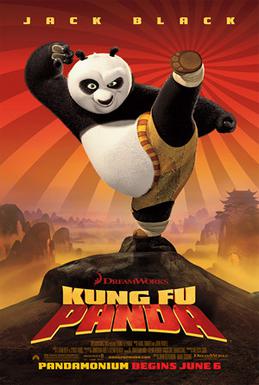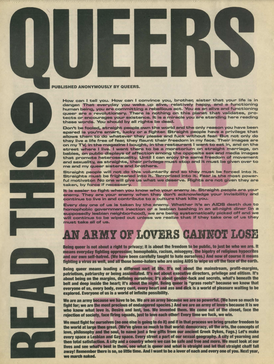
Queer is an umbrella term for people who are not heterosexual or are not cisgender. Originally meaning 'strange' or 'peculiar', queer came to be used pejoratively against LGBT people in the late 19th century. Beginning in the late 1980s, queer activists, such as the members of Queer Nation, began to reclaim the word as a deliberately provocative and politically radical alternative to the more assimilationist branches of the LGBT community.
Queer theory is a field of post-structuralist critical theory that emerged in the early 1990s out of queer studies and women's studies.
Heteronormativity is the concept that heterosexuality is the preferred or normal sexual orientation. It assumes the gender binary and that sexual and marital relations are most fitting between people of opposite sex.

Slavoj Žižek is a Slovenian philosopher, cultural theorist and public intellectual.
"New queer cinema" is a term first coined by the academic B. Ruby Rich in Sight & Sound magazine in 1992 to define and describe a movement in queer-themed independent filmmaking in the early 1990s.

Non-heterosexual is a word for a sexual orientation or sexual identity that is not heterosexual. The term helps define the "concept of what is the norm and how a particular group is different from that norm". Non-heterosexual is used in feminist and gender studies fields as well as general academic literature to help differentiate between sexual identities chosen, prescribed and simply assumed, with varying understanding of implications of those sexual identities. The term is similar to queer, though less politically charged and more clinical; queer generally refers to being non-normative and non-heterosexual. Some view the term as being contentious and pejorative as it "labels people against the perceived norm of heterosexuality, thus reinforcing heteronormativity". Still, others say non-heterosexual is the only term useful to maintaining coherence in research and suggest it "highlights a shortcoming in our language around sexual identity"; for instance, its use can enable bisexual erasure.

Jack Halberstam, also known as Judith Halberstam, is an American academic and author, best known for his book Female Masculinity (1998). His work focuses largely on feminism and queer and transgender identities in popular culture. Since 2017, Halberstam has been a professor in the department of English and Comparative Literature and the Institute for Research on Women, Gender, and Sexuality at Columbia University. Previously, he worked as both director and professor at The Center for Feminist Research at University of Southern California (USC). Halberstam was the associate professor in the Department of Literature at the University of California at San Diego before working at USC.

Kung Fu Panda is a 2008 American animated martial arts comedy film produced by DreamWorks Animation and distributed by Paramount Pictures. The first installment in the Kung Fu Panda franchise, it was directed by John Stevenson and Mark Osborne, from a screenplay and story respectively written by the writing teams of Jonathan Aibel and Glenn Berger, and Ethan Reiff and Cyrus Voris. The film stars the voices of Jack Black, Dustin Hoffman, Angelina Jolie, Ian McShane, Seth Rogen, Lucy Liu, David Cross, Randall Duk Kim, James Hong, Dan Fogler, Michael Clarke Duncan and Jackie Chan. The film, set in a version of ancient China populated by anthropomorphic animals, centers on a bumbling panda bear named Po (Black), a kung-fu enthusiast living in the Valley of Peace. When the savage snow leopard Tai Lung (McShane) is foretold to escape imprisonment and attack the Valley, Po is unwittingly named the "Dragon Warrior", a prophesied hero worthy of reading a scroll that has been intended to grant its reader limitless power.

Bisexual erasure, also called bisexual invisibility, is the tendency to ignore, remove, falsify, or re-explain evidence of bisexuality in history, academia, the news media, and other primary sources.
Feminist sexology is an offshoot of traditional studies of sexology that focuses on the intersectionality of sex and gender in relation to the sexual lives of women. Sexology has a basis in psychoanalysis, specifically Freudian theory, which played a big role in early sexology. This reactionary field of feminist sexology seeks to be inclusive of experiences of sexuality and break down the problematic ideas that have been expressed by sexology in the past. Feminist sexology shares many principles with the overarching field of sexology; in particular, it does not try to prescribe a certain path or "normality" for women's sexuality, but only observe and note the different and varied ways in which women express their sexuality. It is a young field, but one that is growing rapidly.
Queer heterosexuality is heterosexual practice or identity that is also controversially called queer. "Queer heterosexuality" is argued to consist of heterosexual, cisgender, and allosexual persons who show nontraditional gender expressions, or who adopt gender roles that differ from the hegemonic masculinity and femininity of their particular culture.
Kung Fu Panda is an American martial arts comedy media franchise that originally started in 2008 with the release of the animated film of the same name produced by DreamWorks Animation. Following the adventures of the titular Po Ping, a giant panda who is improbably chosen as the prophesied Dragon Warrior and becomes a master of kung fu, the franchise is set in a fantasy wuxia genre version of ancient China populated by anthropomorphic animals. Although everyone initially doubts him, including Po himself, he proves himself worthy as he strives to fulfill his destiny.

Compulsory heterosexuality, often shortened to comphet, is the theory that heterosexuality is assumed and enforced upon people by a patriarchal and heteronormative society. The term was popularized by Adrienne Rich in her 1980 essay titled "Compulsory Heterosexuality and Lesbian Existence". According to Rich, social science and literature perpetuate the societal belief that women in every culture are believed to have an innate preference for romantic and sexual relationships with men. She argues that women's sexuality towards men is not always natural but is societally ingrained and scripted into women. Comphet creates the belief that society is overwhelmingly heterosexual and delegitimizes queer identities. As a result, it perpetuates homophobia and legal inequity for the LGBTQ+ community.
Queering is a technique used to challenge heteronormativity by analyzing places in a text that use heterosexuality or identity binaries. Coming out of queer theory in the late 1980s through the 1990s, queering is a method that can be applied to literature, film, and other media. Originally, the method of queering dealt more strictly with gender and sexuality, but quickly expanded to become more of an umbrella term for addressing identity as well as a range of systems of oppression and identity politics. Even the term queer itself can be queered, because much of queer theory involves working to fight against normalization even in the field itself. In the context of queer theory, "queering is something we do, rather than something we are ."
Queer of color critique is an intersectional framework, grounded in Black feminism, that challenges the single-issue approach to queer theory by analyzing how power dynamics associated race, class, gender expression, sexuality, ability, culture and nationality influence the lived experiences of individuals and groups that hold one or more of these identities. Incorporating the scholarship and writings of Audre Lorde, Gloria Anzaldúa, Kimberlé Crenshaw, Barbara Smith, Cathy Cohen, Brittney Cooper and Charlene A. Carruthers, the queer of color critique asks: what is queer about queer theory if we are analyzing sexuality as if it is removed from other identities? The queer of color critique expands queer politics and challenges queer activists to move out of a "single oppression framework" and incorporate the work and perspectives of differently marginalized identities into their politics, practices and organizations. The Combahee River Collective Statement clearly articulates the intersecting forces of power: "The most general statement of our politics at the present time would be that we are actively committed to struggling against racial, sexual, heterosexual, and class oppression, and see as our particular task the development of integrated analysis and practice based upon the fact that major systems of oppression are interlocking. The synthesis of these oppressions creates the conditions of our lives." Queer of color critique demands that an intersectional lens be applied queer politics and illustrates the limitations and contradictions of queer theory without it. Exercised by activists, organizers, intellectuals, care workers and community members alike, the queer of color critique imagines and builds a world in which all people can thrive as their most authentic selves- without sacrificing any part of their identity.
LGBT erasure refers to the tendency to intentionally or unintentionally remove LGBT groups or people from record, or downplay their significance, which includes lesbian, gay, bisexual, transgender people and those who identify as queer. This erasure can be found in a number of written and oral texts, including popular and scholarly texts.
Queer ecology is the endeavor to understand nature, biology, and sexuality in the light of queer theory, thus rejecting the presumption that heterosexuality and cisgenderedness constitute any objective standard. It draws from science studies, ecofeminism, environmental justice, and queer geography. These perspectives break apart various "dualisms" that exist within human understandings of nature and culture.
Homonormativity is the adoption of heteronormative ideals and constructs onto LGBT culture and identity. It is predicated on the assumption that the norms and values of heterosexuality should be replicated and performed among homosexual people. Those who assert this theory claim homonormativity selectively privileges cisgendered homosexuality as worthy of social acceptance.
Queer coding involves attributing stereotypically queer traits without explicitly stating gender and sexual identity. Though such a character's sexual identity may not be explicitly confirmed within their respective work, a character might be coded as queer through the use of traits and stereotypes recognizable to the audience. Queer coding is a concept both in the discussion of media portrayal of LGBT people and academic research involving queer theory or gender studies.

"Queers Read This" is an anonymously written essay about queer identity. It was originally circulated by members of Queer Nation as a pamphlet at the June 1990 New York Gay Pride Parade, and is generally understood as the group's manifesto.








